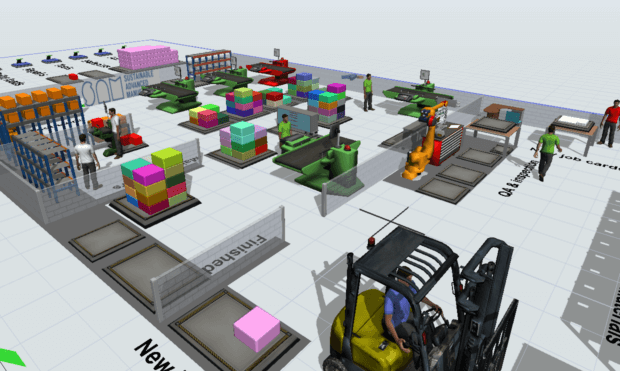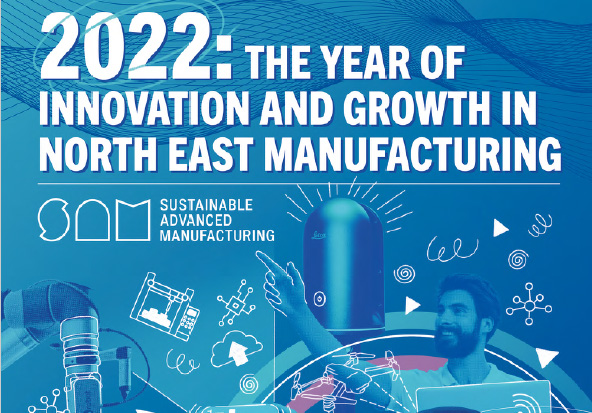Technology advances has allowed the digitisation of simulation concepts into what we now know as the 3D digital twin capability, but the use of simulation tools within manufacturing is not new, with the first known implementations in the 60’s and 70’s.
At that time, the early simulations were highly bespoke, expensive, slow and often manual, with the early adopters being large organisations in automotive, but the gamification of the technology now allows for highly visual, fast and cost effective fully functional digital twins.
In recent years, the concept of digital twins has been applied to a wide range of manufacturing sectors, and the capabilities of 3D digital twins has continued to evolve, making adoption and impacts more accessible.
For those unfamiliar with digital twinning, it is essentially the production of digital representations of machines or work benches, layout, people, timings, processes, routings and which provides manufacturers with a plant and production replica, on the computer.
The twin can then be used for visualisation, analysis, and simulation, to help plant planning and test ideas and aid decision making, to improve efficiency and reduce costs, to minimise risk and plan for growth, which we have experienced directly delivering practical support to our SAM customers.
We first began working with 3D digital twins at SAM in late 2018, as part of our implementation of industry 4.0 technologies and as a potential additional asset in our plans to support the region’s SME manufacturers by making such technologies more accessible.
The potential of the technology was immediately evident from building the very first model which looked at line balance and operator efficiency and then supporting clients with all kinds of projects from building potential production lines to ‘concept plants’ that could help our customers look to secure potential future growth opportunities.
We also began looking at how it could help improve layouts and optimising existing space, for example helping manufacturers visualise and optimise how they could fit new machinery into their workspaces or allow for volume increases and for assessing and optimising potential process improvements and benchmark different ideas.
Once we’d had our eyes opened to the potential of the technology, we began inviting businesses to understand more around the technology hosting a series of workshops on the subject and introducing it to our traditional manufacturing continuous improvement projects.
Our continuous improvement projects were set up to help break down the barriers that SMEs were facing when embracing new technologies and we have been inundated with requests for digital twinning support from manufacturing companies ever since we added it to our offering and our customers can see the results.,
In fact, in just a few years, we’ve helped SMEs secure investment, grow within their existing space and enjoy the benefits of overhead resulting from their expansion, increase their product range and turnover and secure new orders, just by embracing 3D digital twinning. The impact has been incredible.
The adoption of the technology has been transformative and while we still use traditional process improvement techniques, the development of 3d digital twin adds an impressive capability, allowing ideas and solutions to be tested before implementation and demonstrating ideas for shared understanding and critically minimising business risks and potential costs.
Historically, it may have been a tool used by the larger organisations, but as the software becomes more accessible, visual, and intuitive, it is swiftly becoming a key tool for manufacturers of all shape and size by helping them improve efficiency, reduce costs, and enhance quality and innovation.
So, if you’re a manufacturing SME and are interested in finding out more about 3D digital twin software and how it could help your business reduce costs and increase turnover, contact the SAM team today and see the benefits of 3D digital twins for yourself?
It could provide you with a whole new outlook on your business as you plan for the future…
- Rita Potts, Business Process Improvement and Simulation Specialist



